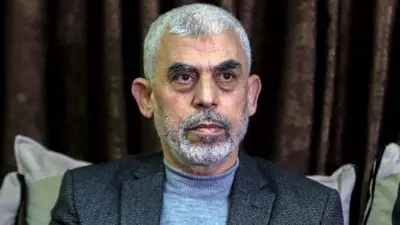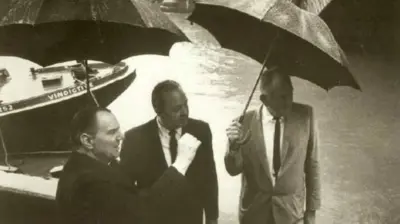We've updated our Privacy and Cookies Policy
We've made some important changes to our Privacy and Cookies Policy and we want you to know what this means for you and your data.
Vine - a year in six seconds
Image source, Getty Images
- Author, Rory Cellan-Jones
- Role, Technology correspondent
Is six seconds enough to say anything interesting?
Yes, according to Colin Kroll, the co-founder of the video app Vine, which lets users share clips lasting no longer than that. So, in a phone call to New York, I challenge him to define his company's mission in just six seconds.
His response is this: "The future of Vine is everyone being able to create short looping videos from their mobile phone in the language that they speak and discover great content."
Well, I make that 27 words, and with the average person speaking at three words to the second that's nine seconds, but maybe Colin is faster than average.
Things have certainly moved at warp speed for him and his co-founders. They started their company in June 2012. Three months later it was acquired by Twitter and a year ago today the Vine app was launched amidst much hoopla.
Since then, others have moved into the short social video market - most notably the Facebook empire. Its hugely popular photo-sharing app Instagram now also allows you to post videos. What's more, users can luxuriate in and can upload something they've shot earlier rather than having to capture them through the app.
And when I used Vine to ask Twitter what I should ask Mr Kroll (yes, I know, a bit too "meta") users wanted to know whether that time limit and the restrictions on how you shoot and edit video would change.
He tells me he and his colleagues are convinced that brevity worked: "People create very elaborate stories in six seconds. It enables a level of creativity that was untapped before Vine."
And while they are thinking about providing different editing mechanisms, the emphasis will remain on keeping it simple.
The other question people want answering is how the app might make money - and here Colin Kroll seems in no more of a hurry than Vine's parent, Twitter, which for years considered it vulgar to to talk about revenues or a business model. "Vine is focused on serving the users," he says, "making it easier to capture moments of your live and share them and discover new content - our focus is not on monetisation."
After a while our conversation begins to feel like a Vine video, the same phrases about "the easiest way to create and share great videos...making it easier to capture and share moments of your life" looping endlessly on.
But then we turn to his favourite Vines, and it seems he is talking from the heart rather than a corporate script. He mentions his own contributions: "I do a series of Vines where I meet famous Viners, and they meet their death - with the hashtag #wemeetatlast. It's a creative outlet that I really enjoy doing!" And he picks out a Vine from One Direction as one of his favourites. No surprise there, as the teenage heartthrob has been a great boost to the platform, his Vines topping the chart of most viewed.
Image source, AP
As to whether Vine or any form of short social video is ever going to be the future of communication, the jury is still out on whether everyone wants to share short clips. It may be that this is just a short-lived craze amongst users in their teens and 20s, who are already moving on to Snapchat. But Colin Kroll tells me that people's adoption of video is "still in its infancy" and points out that turning everyone into social photographers had taken more than a decade, so we shouldn't be too impatient.
We have very little data on how the contest between Vine and Instagram for this market is going. All we know is that there are 40 million Vine users, and about four times as many on Instagram, although how many use its video capabilities isn't clear. But both have the luxury of corporate parents with very deep pockets and ambitions to develop video advertising. So don't expect either Vine or Instagram to give up on their battle to give you the world in six or 15 seconds.
Top Stories
More to explore
Most read
Content is not available








